Contents [show]
Queensland wineries are underrated; they are often shadowed by other attractive characteristics like Surfers Paradise, amusement parks, national parks and old wrinkly men tanning in public. There are an array of cellar doors, winery tours and award-winning wines to check out, alongside some stunning scenery on the Granite Belt. After you have scratched your sandy itch on the famous beaches check out some of the Gold Coast wineries, Sunshine Coast wineries or cruise down the Scenic Rim with your windows down and the tunes cranking. There are even heaps of fantastic wineries in Brisbane that you’ve probably tasted but never seen.
Grab someone to deso-drive (your step mum perhaps) grab a road map ( just joking its 2020) and let’s explore the wine regions of Queensland.
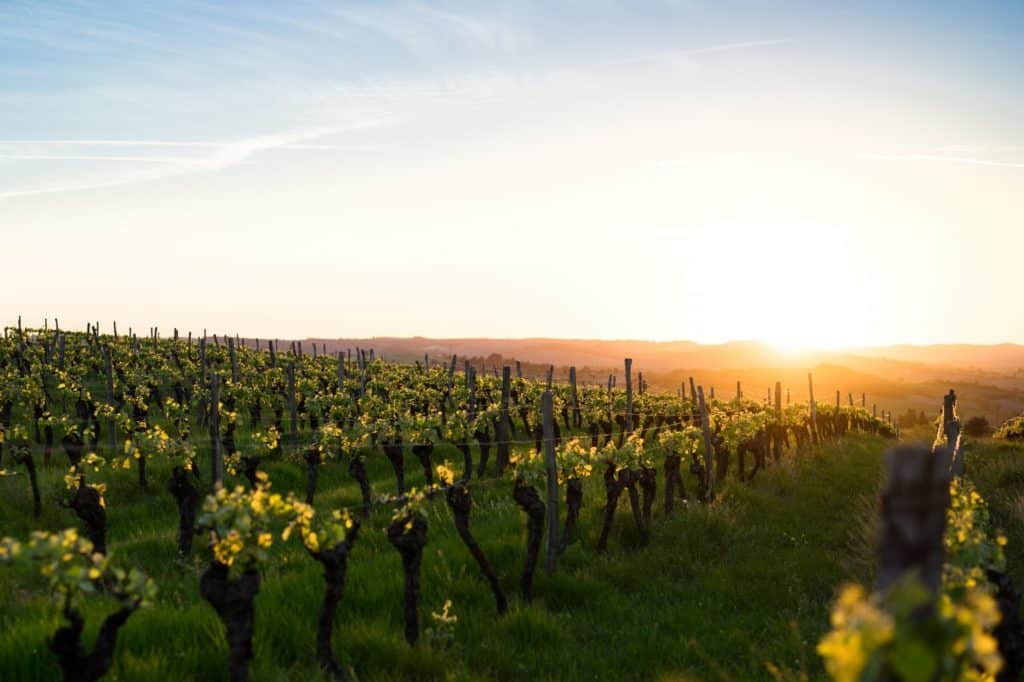
Queensland, Wine and Grape Varieties
Let’s pretend you know nothing about Queensland for a second (if you do you’ll just have to give the gifted some time to catch up). Queensland is a state in the top right corner of Australia, and it covers around 1.85 million square kilometres.
As mentioned before, the region is not commonly distinguished by its rich viticulture, but in recent years, the state has experienced accelerated growth within the wine industry. In 2001, 39 wineries were officially recorded, three years on there were 143, that’s some serious growth.
Queensland faces issues quite contrasting to the southern wine regions; the state undergoes intense heat and high rainfall each year, making fungi a severe problem, whereas the south often fights off the frosts and drought. Due to the heat, most of the vineyards lie to the south-east where temperatures aren’t as extreme.
There are only two official, recognised wine regions in Queensland but six have been specified;
- South Burnett
- Granite Belt
- Darling Downs
- Gold Coast Hinterland
- Scenic Rim
- Sunshine Coast Hinterland
Each of these regions offers something different, and individually, they are diverse in community, history and flavour.
The Great Dividing Range plays a lead role in the wine drama, offering mesoclimates and higher altitudes allowing for cooler temperatures. Though Queensland is limited in what grape varieties they can produce (you won’t see much Pinot noir coming out of the region), they do an excellent job in the viable ones. The top varietals include;
- Shiraz
- Chardonnay
- Semillon
- Cabernet Sauvignon
- Sauvignon Blanc
- Merlot
- Verdelho
- Chambourcin
The History of Wine in Queensland
Look I know history can be a little boring, learning about some old dudes that planted a crop in this paddock and that’s how Brisbane came along etc. (that’s exceptionally un-factual just so you know). But this history, the good and not so good history has moulded Australia into the great country it is today, and wine continues to show that it is a part of our culture. Yes, most Australians start drinking Golden Oak or Fruity Lexia from a silver sack (it’s making me sick just thinking about it), but that develops into an appreciation, a passion for a good drop. Wine is now a strand in Australia’s DNA, so let’s look into the humble beginnings of the Queensland wine industry.
Queensland wine industry goes back 150 years, shocking, right? Considering it has taken them 150 years to actually build an industry. But conditions weren’t as favourable as the prosperous southern regions. Go back even a few more years to 1859, and the Queen scribbled on a bit of paper stating that Queensland was its own colony dividing itself from NSW.
Brisbane experienced rapid growth through the 1860s, but in 1864 a severe flood damaged the town and to top things off a fire that wiped out the Main Strip. (sounds a bit like 2020). True to the Australian hard-working, patriotic attitude, Brisbane bounced back. By 1867 Gold had started to appear in lots of smaller surrounding towns.
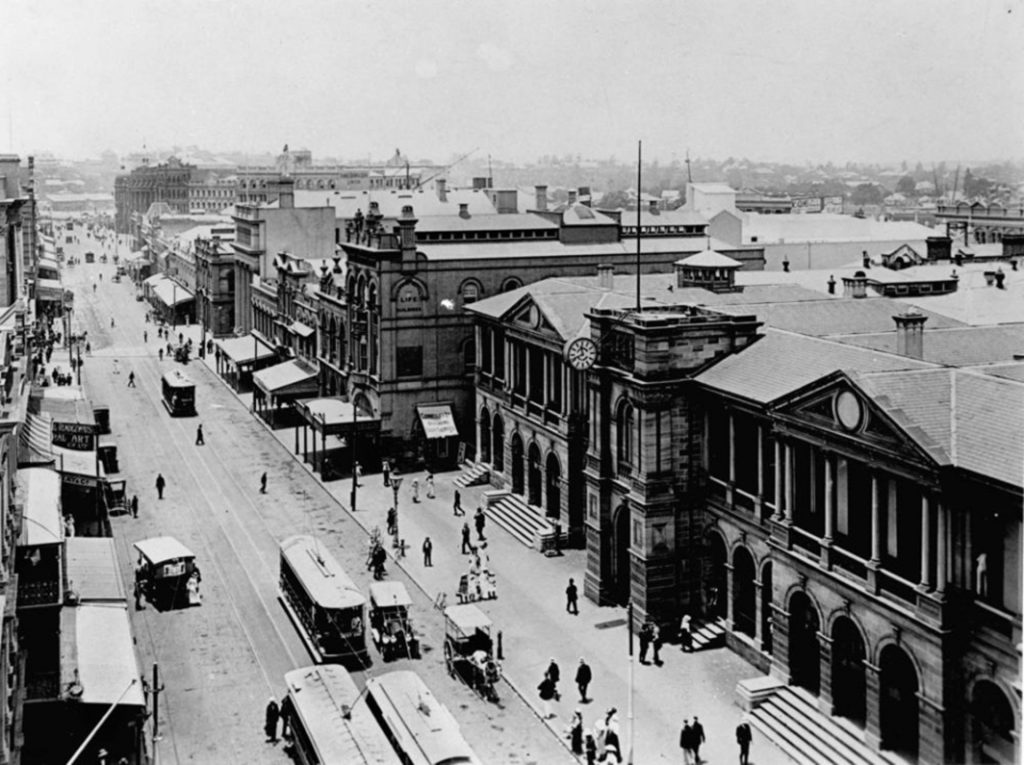
The Gold Rush was a defining chapter in the economic growth of Queensland. It was prevalent for settlers to follow the golden scent. Now Queensland wasn’t just good for growing gold; Its climate was perfect for sugarcane. If you drive past northern NSW, across the border and through Queensland, a large portion of your site seeing will be sugar cane fields. It grows like wildfire, and in the 1870s, it was booming. It was said that Polynesian farmers who came to work in the sugarcane fields introduced the magical yellow Banana fruit.
Commercially, Bananas weren’t grown until the 1880s because Sydney had a solid and loyal trade with Fiji, who supplied the booming city with a range of different exotic fruits. But as the Gold Rush started to spread thinly on the toasty pockets of the settlers, they turned to agriculture. Thus begins the rich agricultural history of QLD so apparent to this day and age.
So where does vino come in? The first vines were planted in 1960 in Roma, a small town with a population of 7000 (current day). The Town was named after The Contessa Diamantina di Roma, an Italian woman of royalty that married Sir George Bowen, the first governor of QLD. At this time a large number of Italian migrants moved to Queensland escaping poverty or as it’s known in Italy, ‘la miseria’. It was this Mediterranean influence on the state that founded the beginnings of viticulture in Queensland.
Though such early foundations were established, on par with the wine-growing successors of the south, Queensland did not develop a commercial wine industry until 1968. Angelo Puglisi of Ballandean Estate (one of the fantastic Granite Belt wineries) planted a block of Shiraz and manufactured QLD’s first bottle of Vino, thus starting the revolution.
The Wine Regions of Queensland
Granite Belt
The Granite Belt is located 3 hours south of Brisbane with the town of Stanthorpe resting at the heart of it all. The belt takes its name from the two-hundred million-year-old rock formations that reach up to 1500 meters above sea level. These altitudes provide a cooler climate for the region, making it the most abundant in Queensland and the only place to experience four seasons. The Granite Belt lies in the south-east bordering NSW. If it weren’t for the natural construction of the Great Dividing Range from which the border is crafted the Belt would be in New South Wales affecting the wine industry in QLD severely.
The region is known for its productive agriculture, producing most of Queensland’s apple supply and 60% of the wine. The deep sandy soils promote thick well-rooted vines with rich minerals helping the quality of the grapes. The usual suspects dominate the grape varieties Shiraz, Cab Sauv, Chardonnay and Merlot.
Stanthorpe wineries are particularly regarded as being the best in QLD, but throughout this scenic farm country, you’re unlikely to be disappointed wherever you end up.

Scenic Rim
Though the name suggests some kinky innuendo, it actually received its title due to the eroded terior of an ancient shield volcano. The beauty of the region is unfathomable; from Tamborine Mountain in the north, to the Lost World in the south vineyards entwine their way through the fertile lands making for a perfect picturesque road trip.
Most of the wineries use cellar doors as a means to connect with the wine pioneers (wioneers) offering cream of the crop tasting tours and insight on how their wine is crafted. A lot of the cellar doors in the Scenic Rim wine region operate out of historic homesteads and old stone buildings which sets the scene and vibe.
The region is cooled by the higher altitudes of Tamborine Mountain and the rivers that run through the area. The climate however, can be quite humid and hot making the primary focus powerful red table wines and fortified wines. Towards the cooler, fertile valleys you will find more experimental varieties like Verdelho, Vermentino and Matro.
If you’re in for something different make sure you check out the Tamborine Mountain Distillery where you’ll find a broad range of local Schnapps, Gins and Vodkas on offer.

South Burnett
The Burnette Valley is the most northern official wine-growing region in Australia and the first to be given geographical indication in Queensland. The regular grape varieties you’ll commonly find throughout the region are Semillon, Shiraz, Sangiovese, Chambourcin and Verdelho (in order of quantity).
Given the northern climatic position, the region does not by any means produce a lot of wine. The whole area churns out as much as one medium-sized winery in the Barossa Valley.
Droughts have played a devastating role in the recent history of the South Burnett wine region. With the yield decreasing yearly, one can only assume that global warming has something to do with it. The region ranks as one of the world’s hottest viticultural areas; this shows the integral toils of the wine community in the area. Picking grapes on a 35-degree day doesn’t tickle the fancy of most.
Droughts and difficulty aside, there are 25 wineries in the region to choose from alongside some great walks and sights to see like the Bunya Mountains or Boat Mountain National Park.
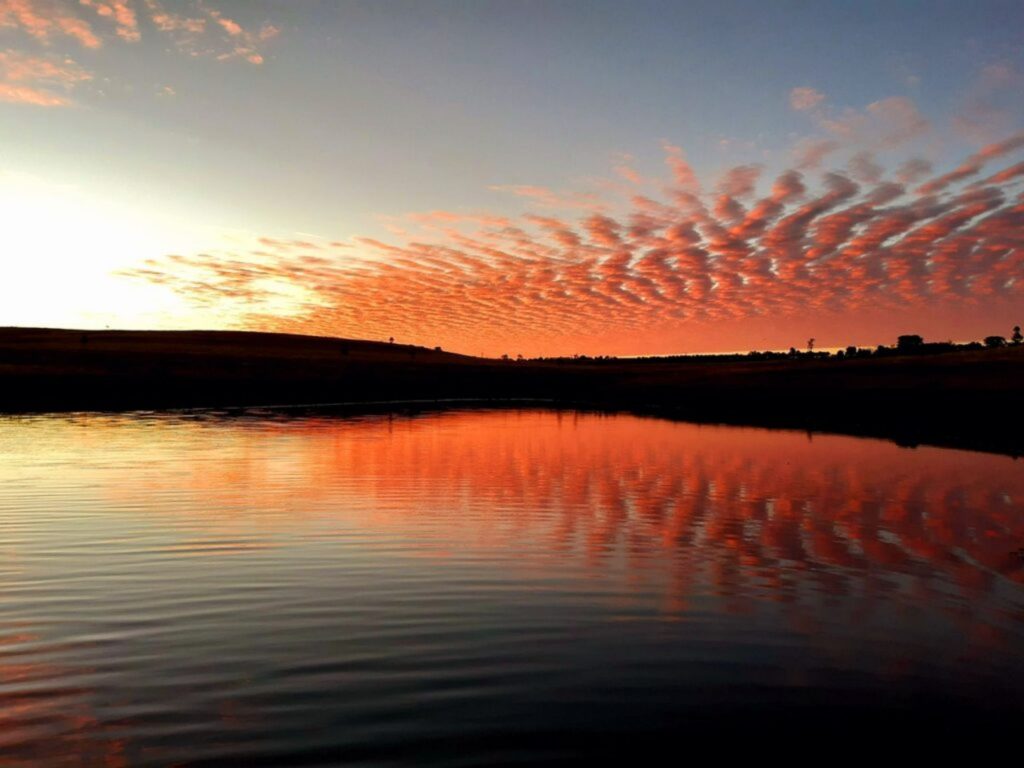
Gold Coast Hinterlands
Rainforest and countryside capture the quintessence of the Gold Coast wine region. With world-class restaurants, award-winning wineries and the Gold Coast itself just half an hour’s drive away, you couldn’t go wrong booking tickets.
The region’s industry is fast-growing, and although wine isn’t the first thing that people think of when they go to the Gold Coast, it’s making its way up the popularity ladder. There are only so many times you can ride the Superman roller coaster, or avert your eyes from the leather dwellers persistent in wearing tight red budgie smugglers, without filling up a paper bag. Visiting wineries in the region is a great alternative.
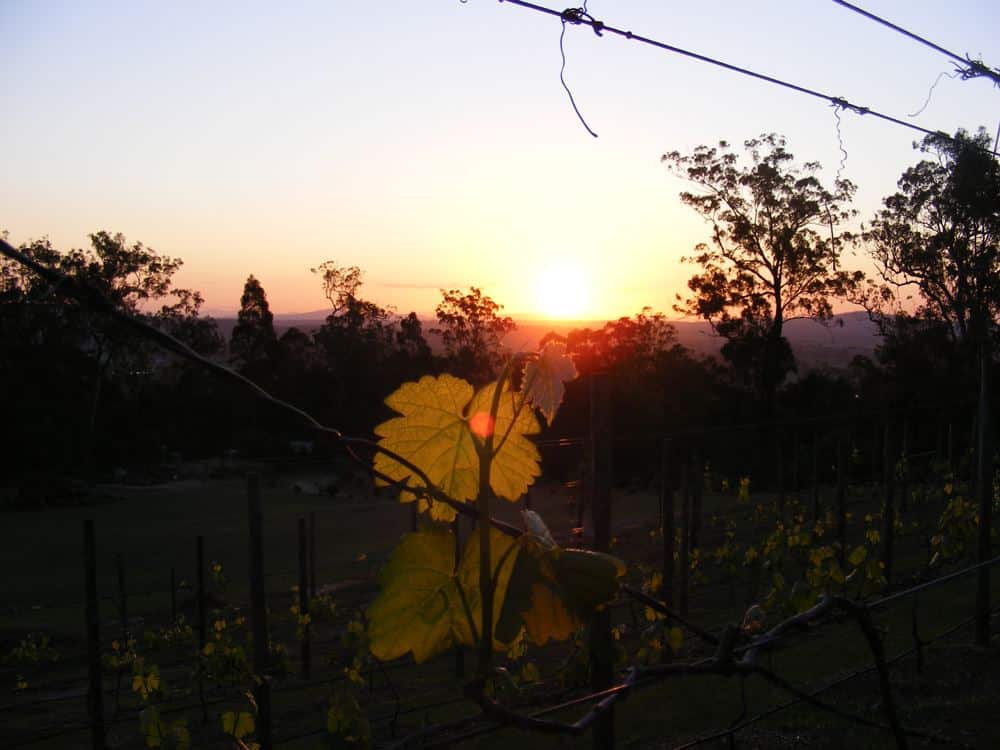
Here are a few wineries you should check out whilst visiting the Gold Coast Hinterlands;
- Cedar Creek Estate Vineyard
- O’Reilly’s Canungra Valley Vineyards
- Sirromet Winery
- Witches Falls Winery
That’ll get you started.
Sunshine Coast Hinterlands
The Wineries in the Sunshine Coast Hinterlands are very diverse and the region itself, similar to the Gold Coast region, is fast growing. The Blackall Ranges offer cooler climates and mesoclimates, but to the valleys in the east toward the coast, milder climates control what’s available. Here are a couple of wineries we think you should check out.
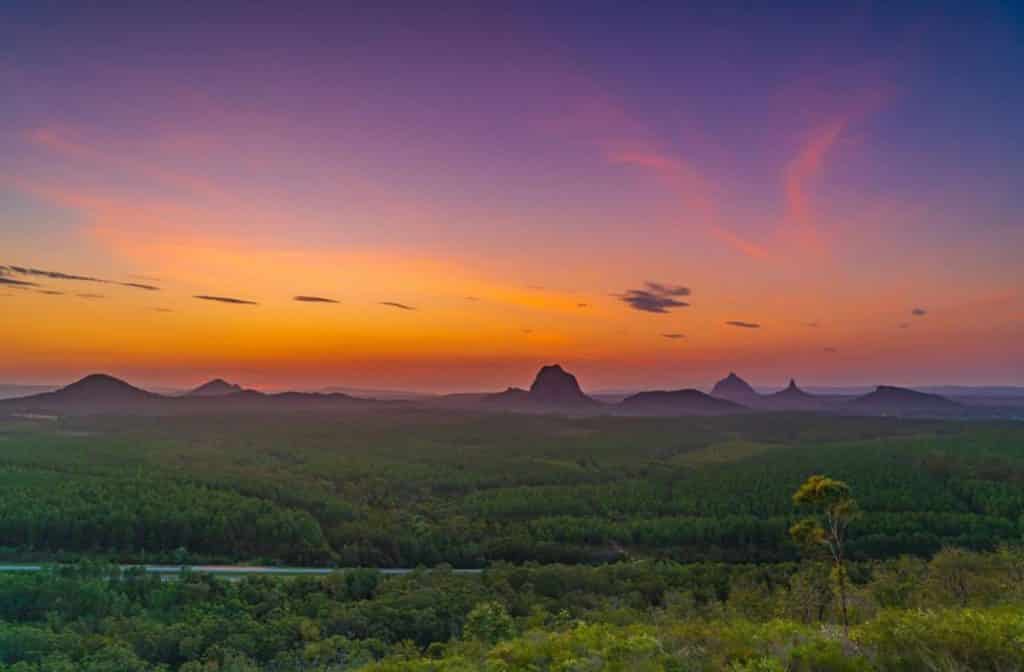
Flame Hill Vineyard – this place is awesome; firstly the architecture is innovative, the restaurant and cellar door sits proudly on the estate’s hill looking out past the vines and into the surrounding valleys.
The colour palette of red and grey pop perfectly contrasting to how green and luscious the property is. The food is innovative, and the wine has an excellent balanced portfolio of reds, whites and fortifieds. There is bound to be a drink or three to your liking.
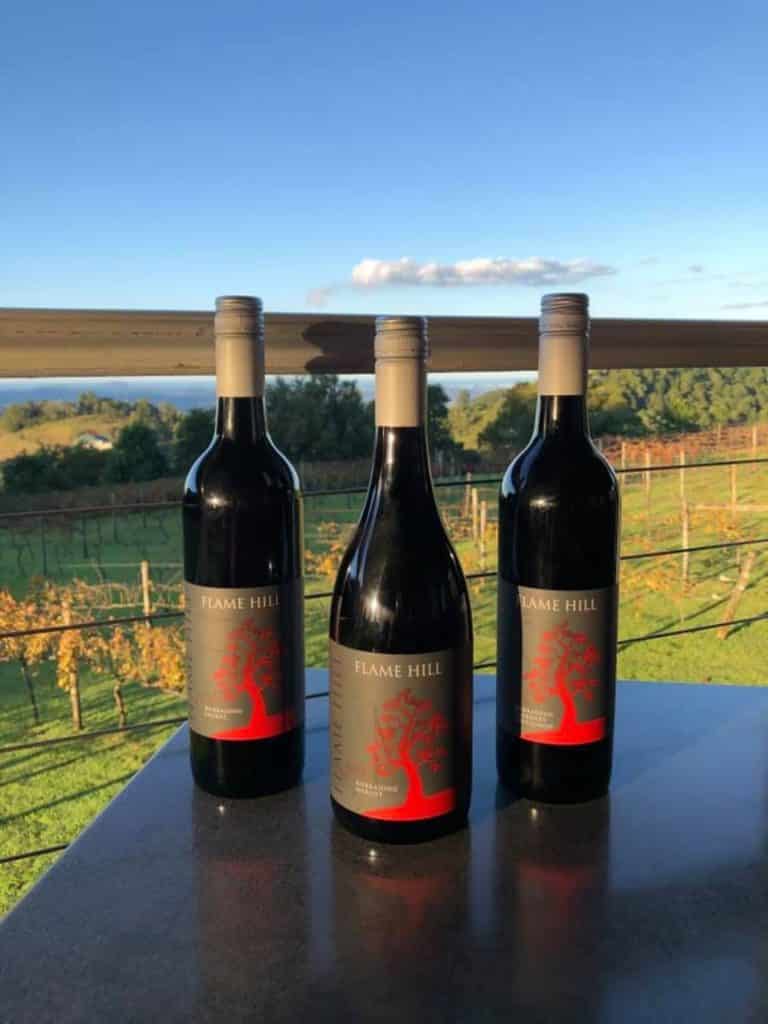
Dingo Creek
Sometimes wine can be a bit snobby and the wineries can portray pretentious, yeah… not at Dingo Creek Vineyard. These guys are so laid back and it kind of just feels like you’re having a vino with your mates. Their primary varietal focus is Cab Sauv, Merlot, Chardonnay and Sauv Blanc but they also do a great Honey Mead and Muscat that we highly recommend. Dingo Creek Vineyard is a 40-minute drive from Noosa, and we think it’s 100% worth the trip.
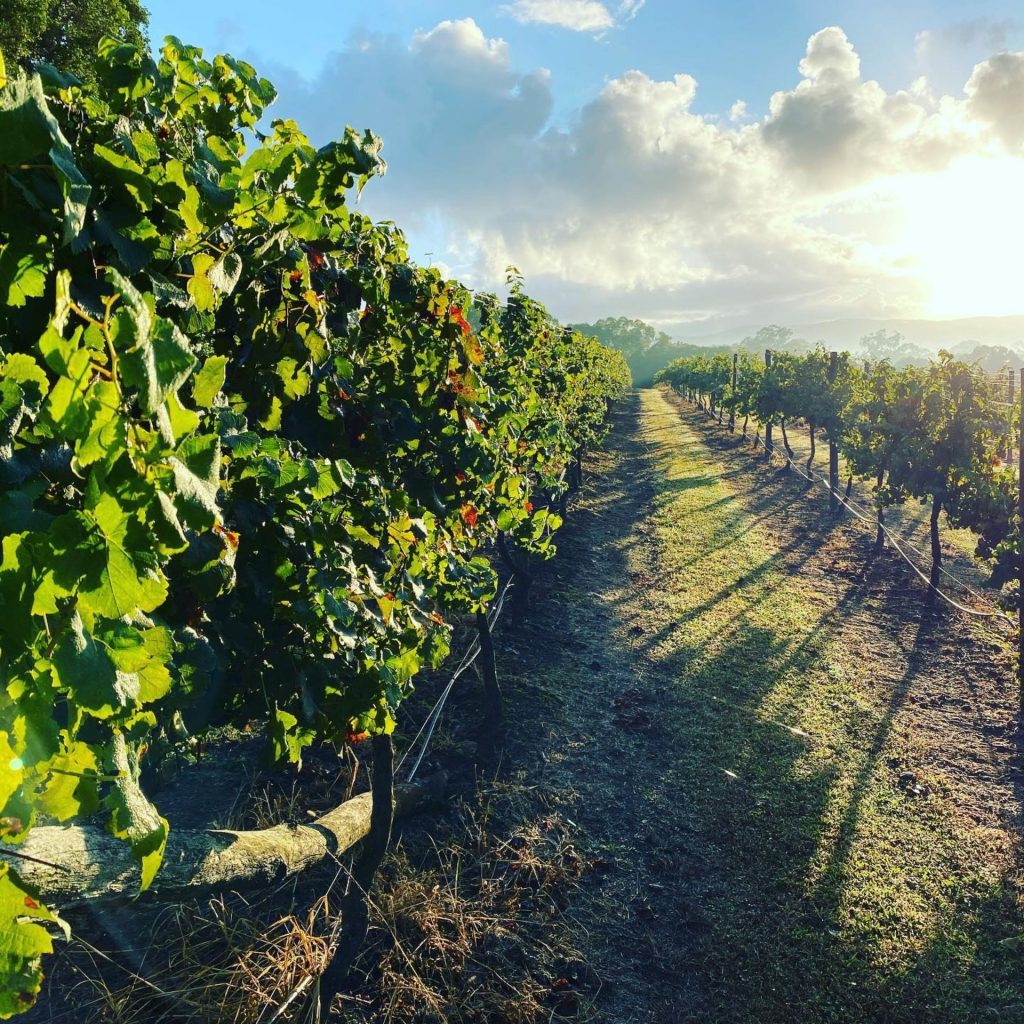
Darling Downs
The Darling Downs wine region is centred around the town of Toowoomba. The region is built around farming, specifically cattle. The beef that comes out of the area is highly sought after around Australia. Wine came into the picture at the end of the 19th century but didn’t really make a dent until recent years as the wine industry and tourism have started to flourish.
The small scale boutique winery isn’t as popular as it is in the more well-known regions of QLD like Granite belt and South Burnett. Darling Downs caters to higher wine production rather than flare as it has been engrained on the community’s culture to ‘farm for a living’. However a recent surge in alternative viticultural and boutique wineries is apparent and responsible for some different grape varieties popping up.
Coinciding with the great wines of the region you’ll find some breathtaking scenery as you encompass your way through the farmlands. Make sure you check out the Queen Mary Falls, the Main Range National Park or the multitude of sub-tropical rainforests that litter the area.
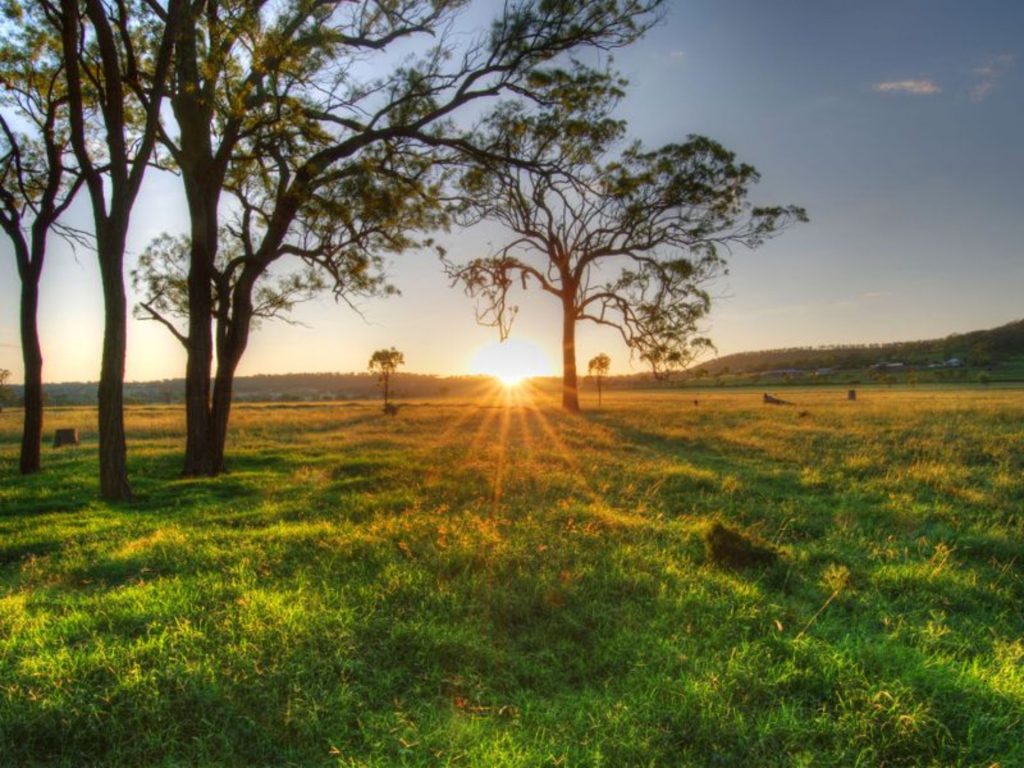
Visiting Queensland’s Wine Regions
Well hopefully this article has given you some insight into the unknown wine regions of Queensland. Yes, it’s true this place is not known for its wine due to the excess of other activities in store. But don’t let the bright flashy lights and the perfect waves steer you away from experiencing some of the most beautiful scenic landscapes and vineyards Australia has to give.